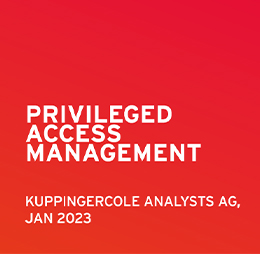Privileged Access Management (PAM) plays a vital role in organizational security by enabling control and monitoring of privileged accounts and resources. These accounts possess elevated access privileges, making them attractive targets for attackers seeking unauthorized entry into sensitive systems and data. By implementing PAM, organizations can mitigate the risk of security breaches and data loss by enforcing strict access limitations on privileged accounts. Moreover, PAM helps organizations meet compliance requirements and fulfill cybersecurity insurance obligations. PAM solutions commonly offer features like centralized management of privileged access, automated password management, and activity monitoring and auditing, providing comprehensive protection and oversight.
Let’s take a look at today’s top tools and technologies in the Privileged Access Management market.
Password Management Tools
Password management tools are indispensable software programs specifically designed to securely store, organize, and retrieve passwords for numerous online accounts. Their significance lies in their ability to assist users in generating robust and distinct passwords for each account, thereby minimizing the risk of security breaches resulting from password reuse or weak passwords. By using password managers, individuals can conveniently access multiple accounts with ease, as the tools automatically fill in login credentials. Additionally, these tools provide valuable alerts to users concerning password-related security concerns, such as expired or compromised passwords, ensuring proactive protection. Moreover, password management tools often offer advanced features like encrypted storage, password strength assessment, secure password sharing, and multi-factor authentication integration to provide comprehensive password management capabilities. With their user-friendly interfaces and robust security measures, password management tools have become essential aids for individuals and organizations in maintaining strong and secure online account credentials.
Multi-Factor Authentication (MFA)
Multi-Factor Authentication is a security mechanism that requires users to provide two or more pieces of evidence to verify their identity before accessing an account or system. This evidence may include something the user knows (such as a password), something they have (such as a smart card or mobile device) or something they are (such as a fingerprint or facial recognition).
MFA adds an extra layer of security to protect against unauthorized access, particularly in situations where a password may be compromised. Even if an attacker has obtained a user's password, they would still need access to the user's second authentication factor, which can be much harder to obtain. This can significantly reduce the risk of a data breach or other security incident.
Privileged Identity Management Tools
Privileged Identity Management (PIM) is a security solution that focuses on controlling and monitoring access to privileged accounts and resources within an organization. Privileged accounts are those with elevated access to critical systems, data or applications, and are typically used by IT administrators, developers or other privileged users.
PIM helps organizations minimize the risk of data breaches or other security incidents caused by unauthorized access to privileged accounts. PIM solutions typically provide features such as centralized management of privileged access, automated password management and activity monitoring and auditing. By implementing PIM, organizations can ensure that only authorized personnel have access to sensitive systems and data and can detect and respond to any suspicious activity or misuse of privileged accounts. This can help organizations improve their overall security posture and compliance with regulatory requirements.
Session Recording and Monitoring Tools
Session recording and monitoring tools are software applications that capture and record user activity during an online session, typically on a web application or website.
These tools help organizations improve security and compliance by enabling them to monitor user behavior, detect potential security incidents or policy violations and investigate incidents that may have occurred. They can capture a range of information, including user actions, keystrokes and mouse movements, as well as network traffic and system activity, and use it to identify potential security threats, such as unauthorized access or data theft, as well as compliance issues related to data privacy, access controls or other regulatory requirements. Some common uses of session recording and monitoring tools include monitoring employee behavior for policy violations, detecting fraud or other malicious activity and identifying areas for process improvement or training.
Least Privilege Management Tools
Least privilege management is a security principle that limits user access rights to only those necessary for them to perform their job functions. This means that users are only given the minimum level of access required to complete their tasks, and no more.
Least privilege management is important because it reduces the risk of unauthorized access to sensitive systems and data. By limiting user access rights, organizations can minimize potential damage caused by a compromised account or an insider threat. These tools also help organizations comply with regulatory requirements, such as HIPAA, PCI DSS and GDPR, which mandate the use of access controls and least privilege principles to protect sensitive data.
Implementing least privilege management can be challenging, as it requires organizations to carefully analyze their systems and data to determine appropriate access levels for each user role. However, the benefits of improved security and compliance can far outweigh the costs and effort required for implementation. Many modern operating systems and applications now include built-in tools for implementing least privilege management, such as Windows User Account Control (UAC) and Linux Sudo.
Conclusion
By implementing PAM, organizations can better protect against insider threats, external attacks and accidental or intentional misuse of privileged accounts. PAM also helps organizations comply with regulatory requirements and industry standards that mandate strong access controls for privileged accounts, such as PCI DSS, HIPAA and GDPR. Overall, PAM is an essential security practice for any organization that values the security and privacy of their sensitive data and assets.





